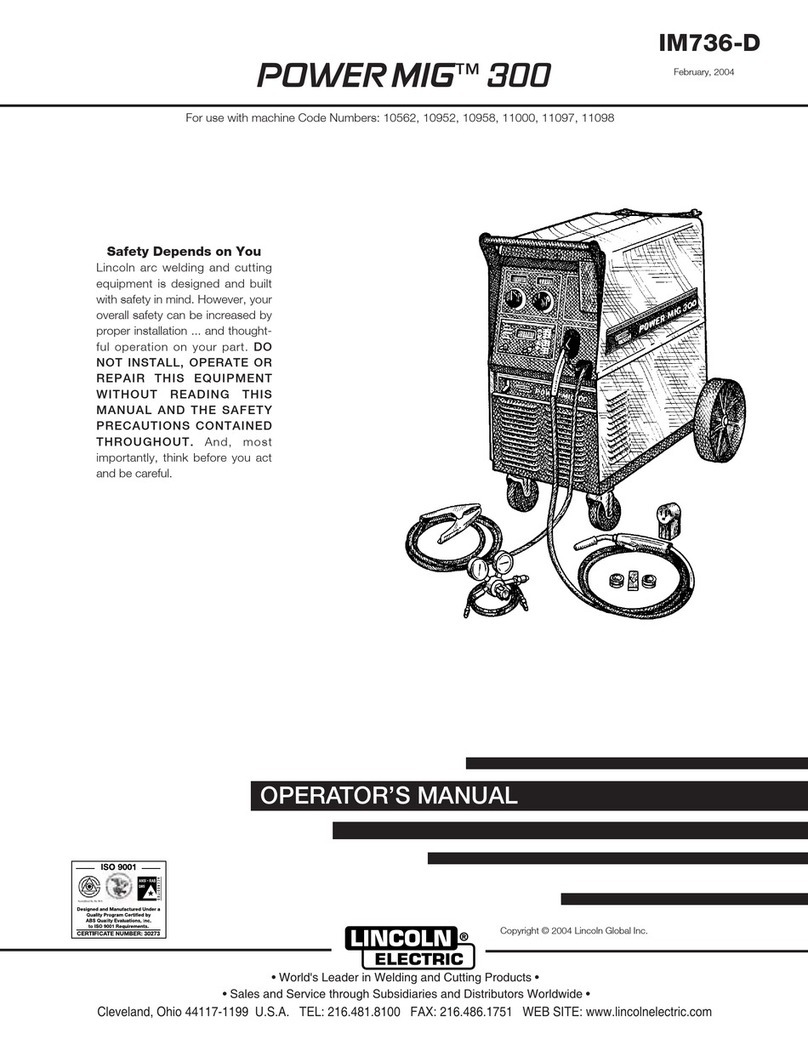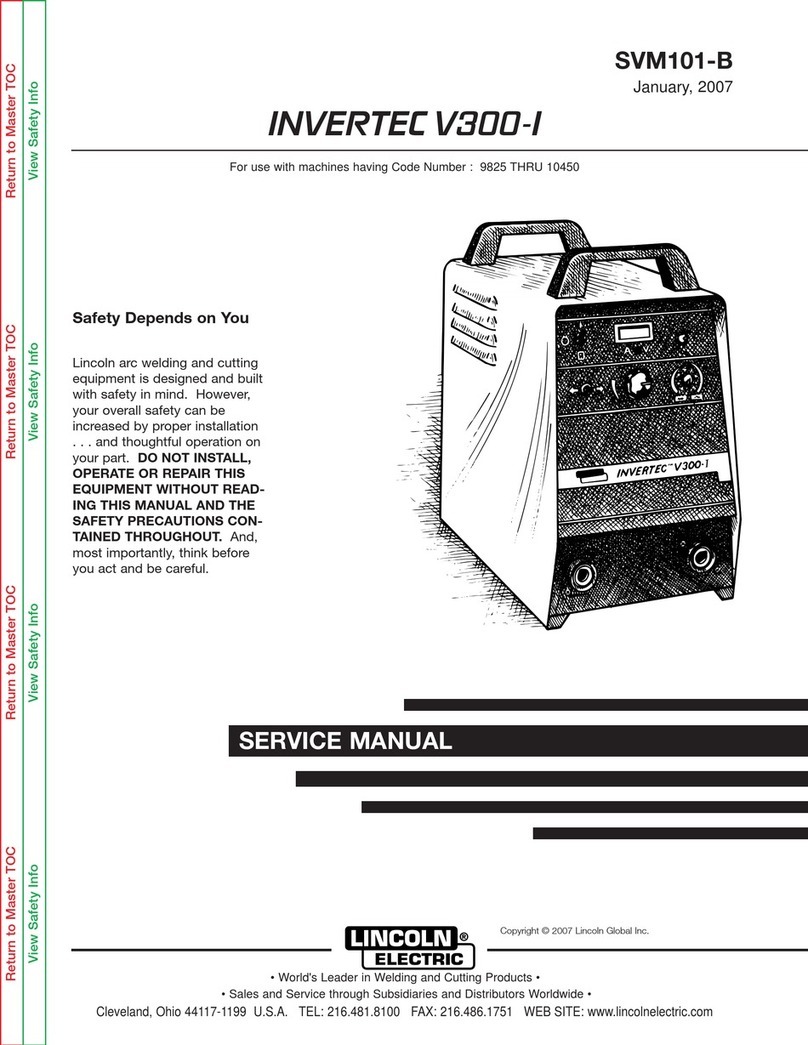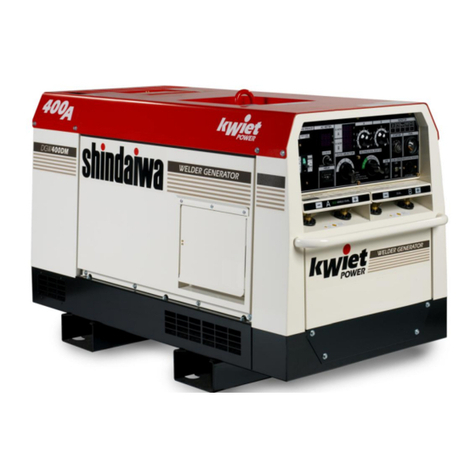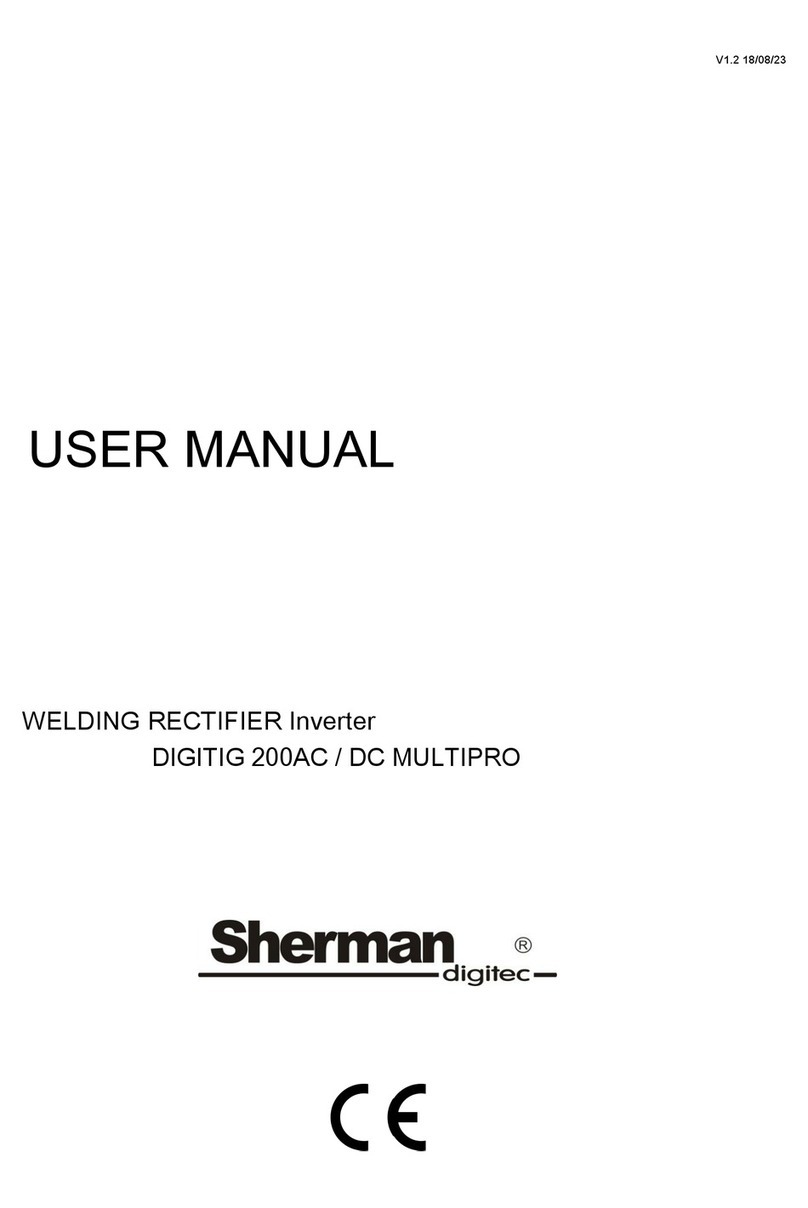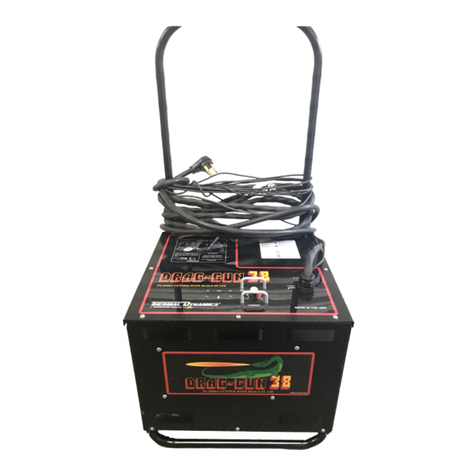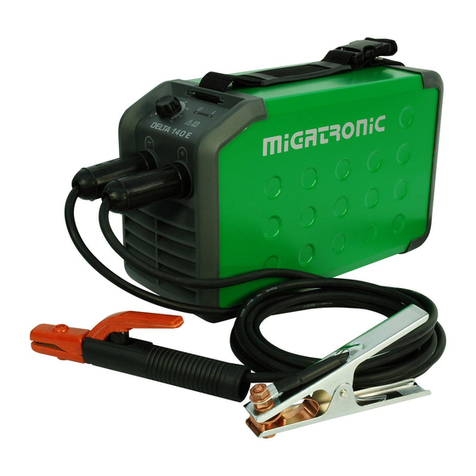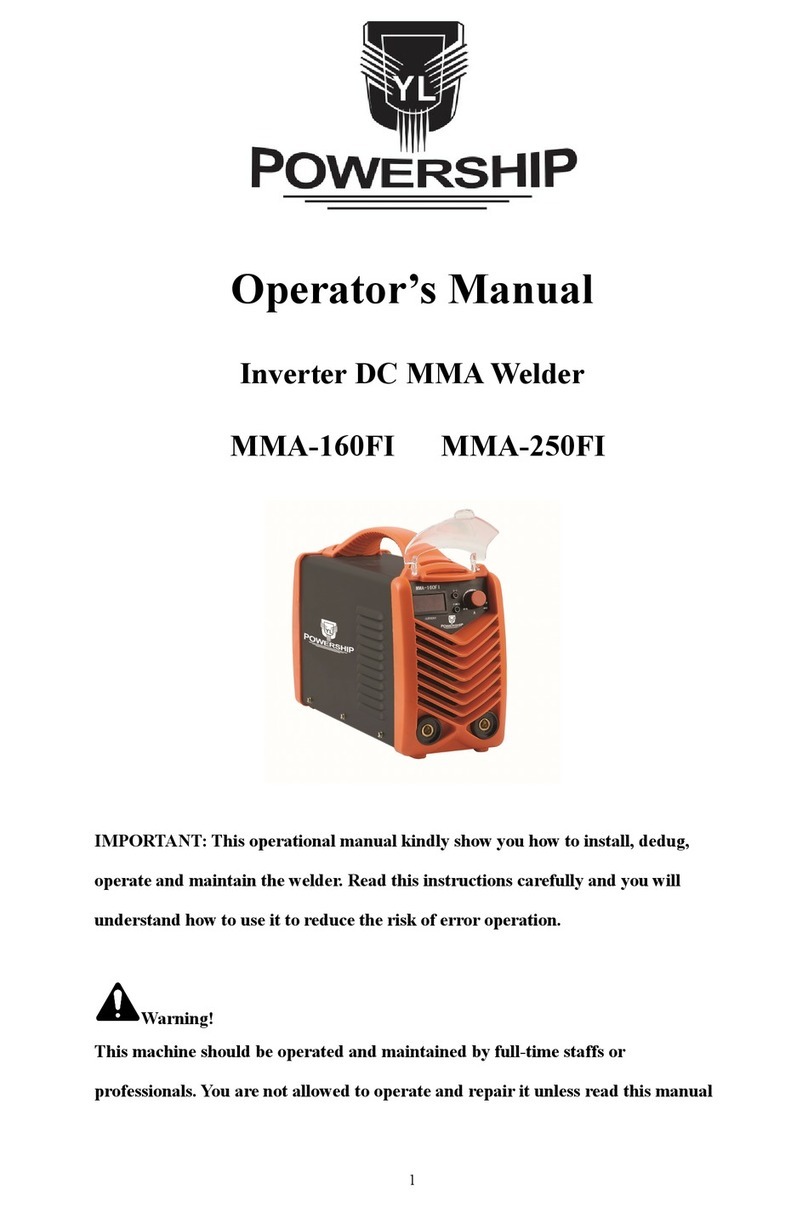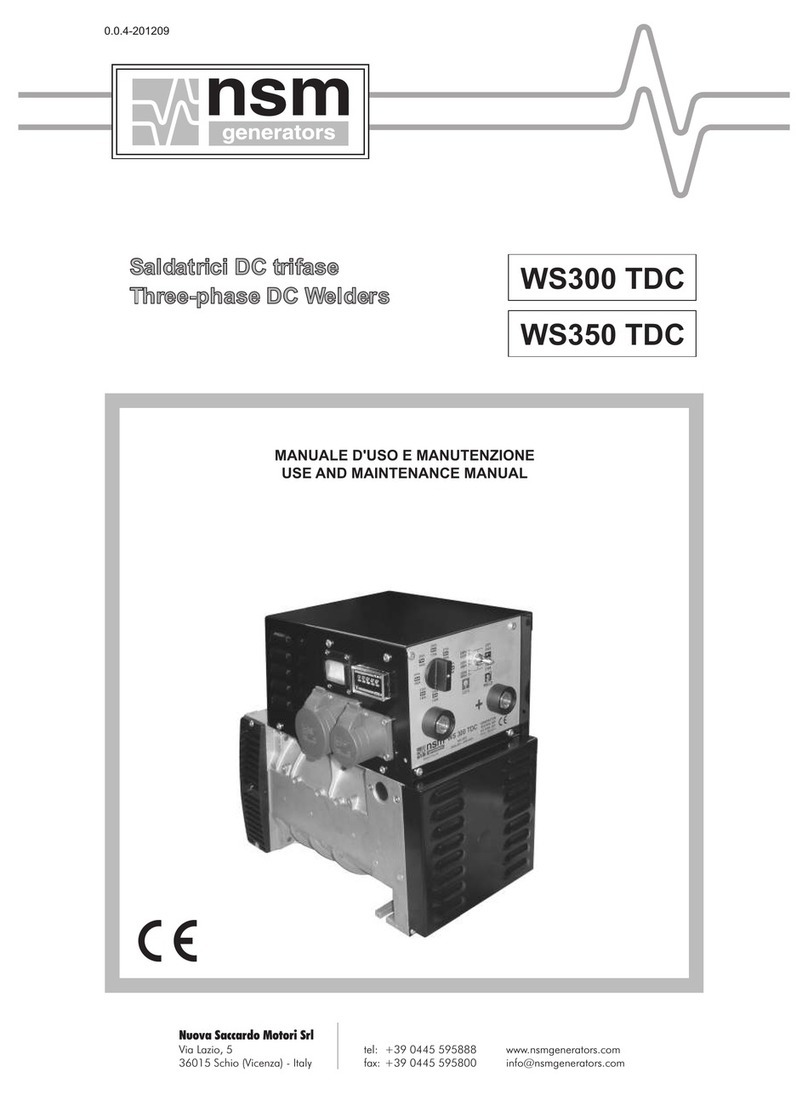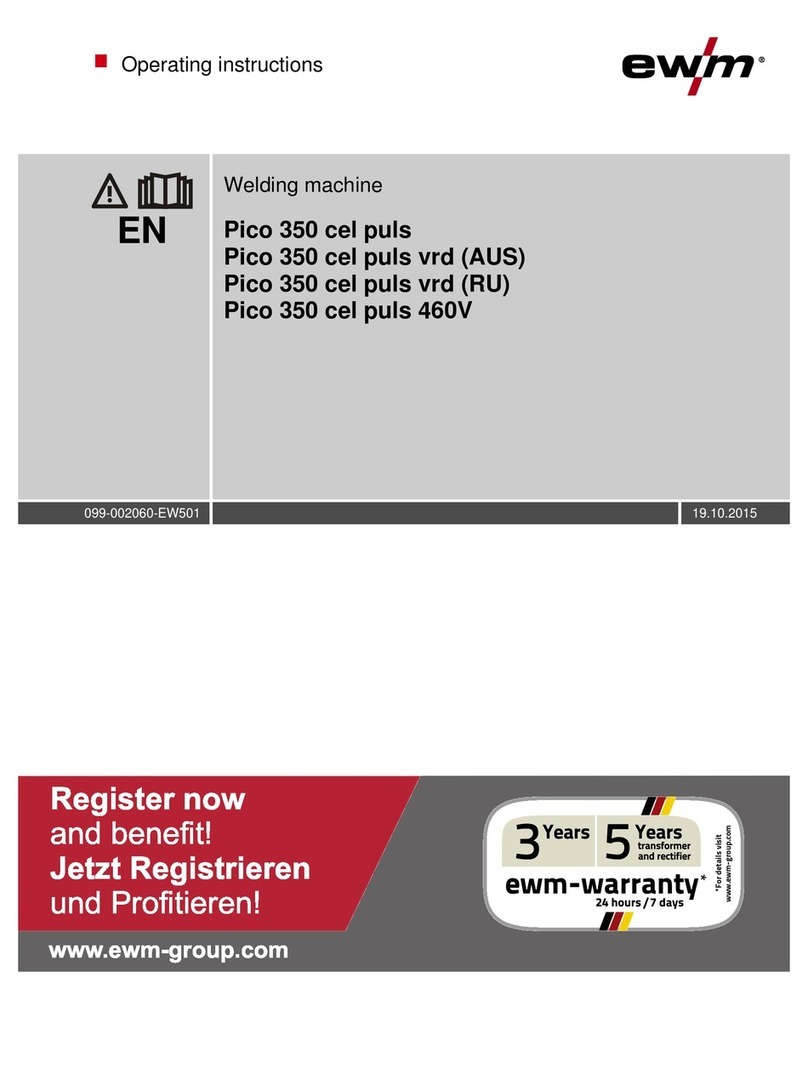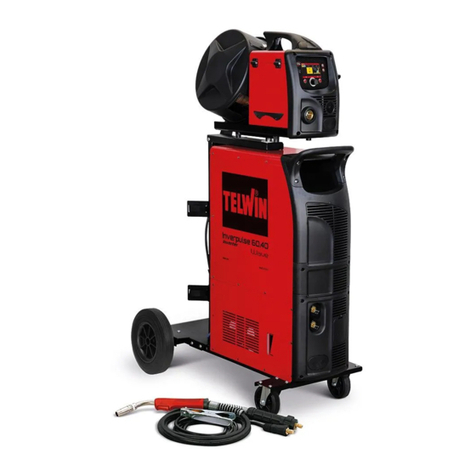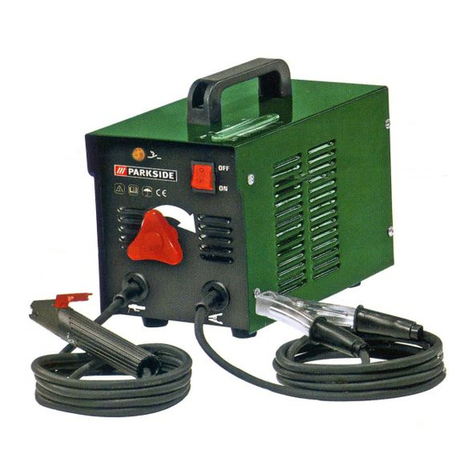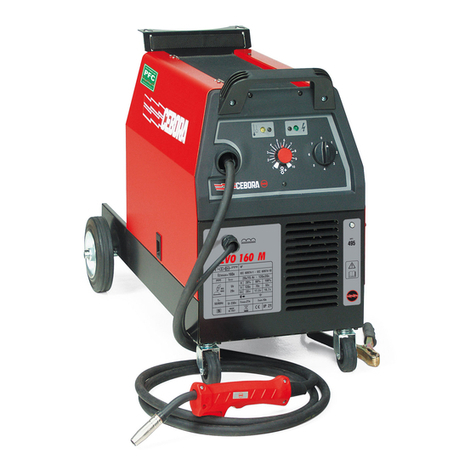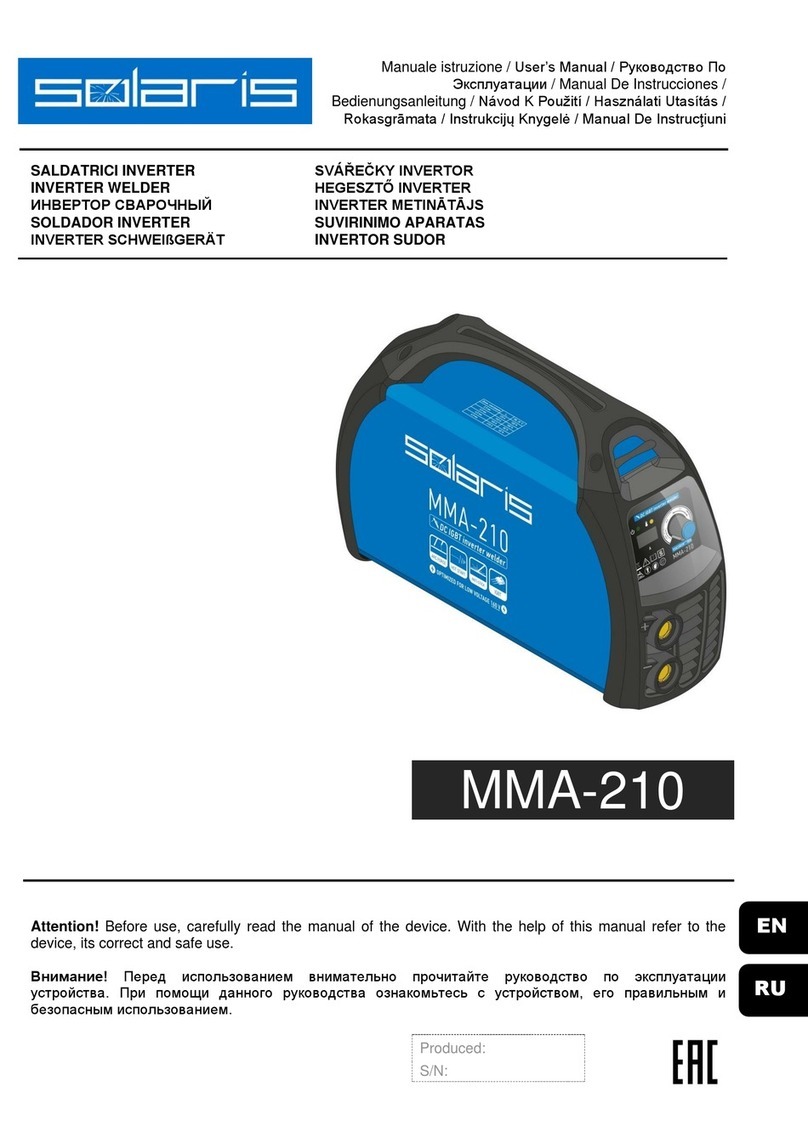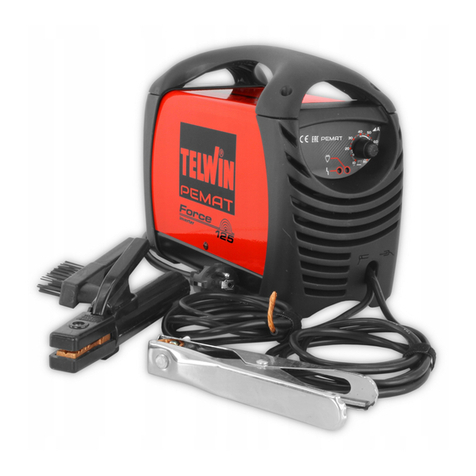
013TIG 185AC/DC FP Operating manual
considered as the maximum which can be used without burning
through the work, over-heating the electrode or producing a
rough spattered surface, i.e. the current in the middle of the
range specified on the electrode package is considered to be the
optimum.
In the case of welding machines with separate terminals for
different size electrodes, ensure that the welding lead is connected
to the correct terminal for the size electrode being used. When
using machines with adjustable current, set on the current range
specified.
The limits of this range should not normally be exceeded.
Arc length
To start the arc, the electrode should be gently scraped on the work
until the arc is established. There is a simple rule for the proper arc
length; it should be the shortest arc that gives a good surface to the
weld. An arc that is too long reduces penetration, produces spatter
and gives a rough surface finish to the weld. An excessively short
arc will cause sticking of the electrode and rough deposits that are
associated with slag inclusions.
For downhand welding, it will be found that an arc length not
greater than the diameter of the core wire will be most satisfactory.
Overhead welding requires a very short arc, so that a minimum
of metal will be lost. Certain SolidSTRIKE electrodes have been
specially designed for ‘touch’ welding. These electrodes may be
dragged along the work and a perfectly sound weld is produced.
Electrode angle
The angle which the electrode makes with the work is important to
ensure a smooth, even transfer of metal. The recommended angles
for use in the various welding positions are covered later.
Correct travel speed
The electrode should be moved along in the direction of the joint
being welded at a speed that will give the size of run required. At
the same time the electrode is fed downwards to keep the correct
arc length at all times.
Correct travel speed for normal welding applications varies between
approximately 125–375 mm per minute, depending on electrode
size, size of run required and the amperage used.
Excessive travel speeds lead to poor fusion, lack of penetration, etc.
Whilst too slow a rate of travel will frequently lead to arc instability,
slag inclusions and poor mechanical properties.
3.4 Welding technique
Successful welding depends on the following factors:
• selection of the correct electrode
• selection of the correct size of the electrode for the job
• correct welding current
• correct arc length
• correct angle of electrode to work
• correct travel speed
• correct preparation of work to be welded.
3.5 Electrode selection
As a general rule the selection of an electrode is straight forward,
in that it is only a matter of selecting an electrode of similar
composition to the parent metal. It will be found, however, that for
some metals there is a choice of several electrodes, each of which
has particular properties to suit specific classes of work. Often, one
electrode in the group will be more suitable for general applications
due to its all round qualities.
Electrode size
The size of the electrode is generally dependent on the thickness
of the section being welded, and the larger the section the larger
the electrode required. In the case of light sheet the electrode size
used is generally slightly larger than the work being welded. This
means that if 1.5 mm sheet is being welded, 2.0 mm diameter
electrode is the recommended size. The following table gives the
recommended maximum size of electrodes that may be used for
various thicknesses of section.
Recommended electrode sizes
Average thickness of plate or
section
Maximum recommended
electrode diameter
≤1.5 mm 2.0 mm
1.5–2.0 mm 2.5 mm
2.0–5.0 mm 3.15 mm
5.0–8.0 mm 4.0 mm
≥8.0 mm 5.0 mm
For further help on choosing the right electrode for your work
please contact your local Messer supplier.
Welding current
Correct current selection for a particular job is an important factor in
arc welding. With the current set too low, difficulty is experienced
in striking and maintaining a stable arc. The electrode tends to stick
to the work, penetration is poor and beads with a distinct rounded
profile will be deposited.
Excessive current is accompanied by overheating of the electrode.
It will cause undercut, burning through of the material, and give
excessive spatter. Normal current for a particular job may be




















